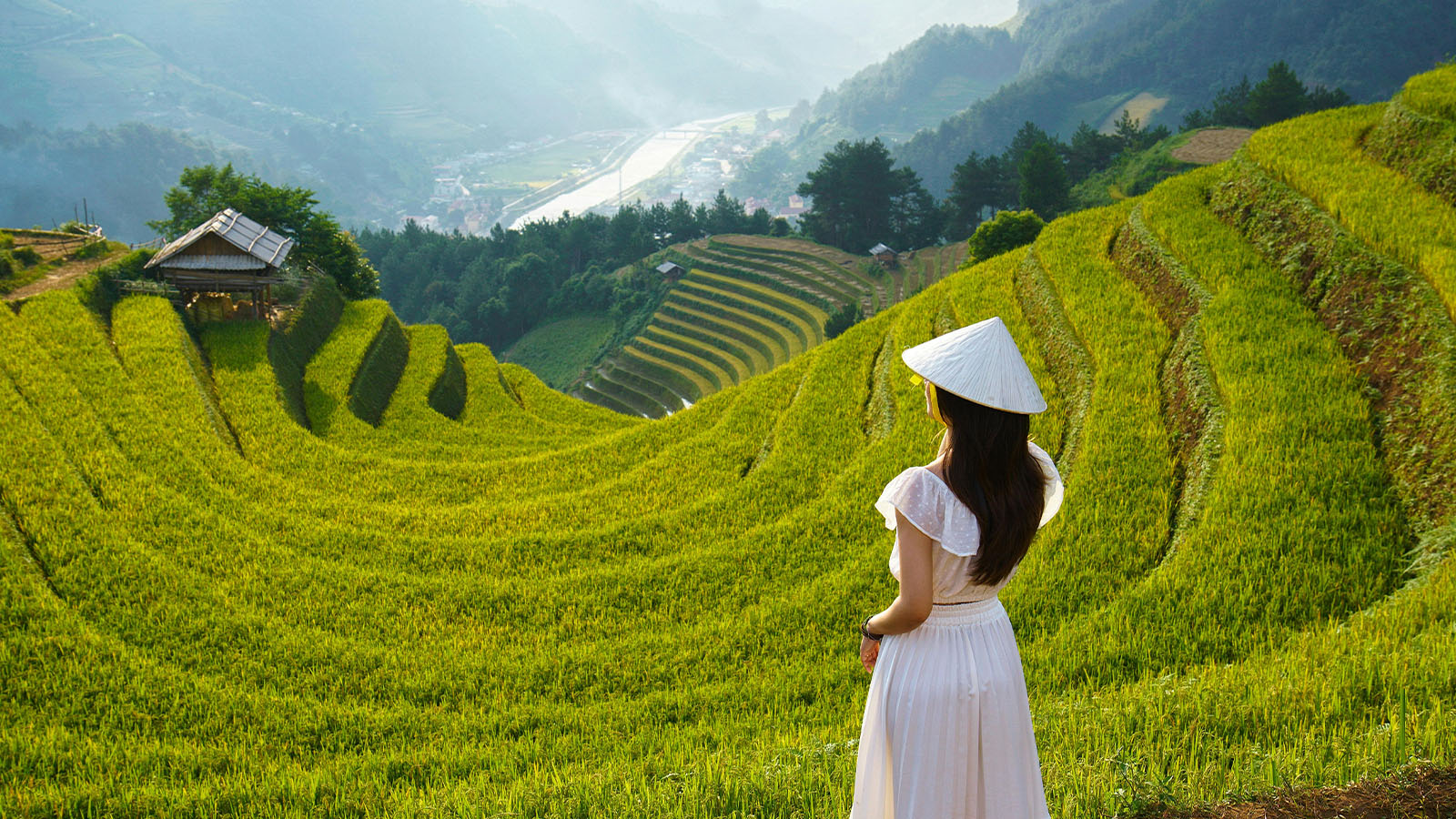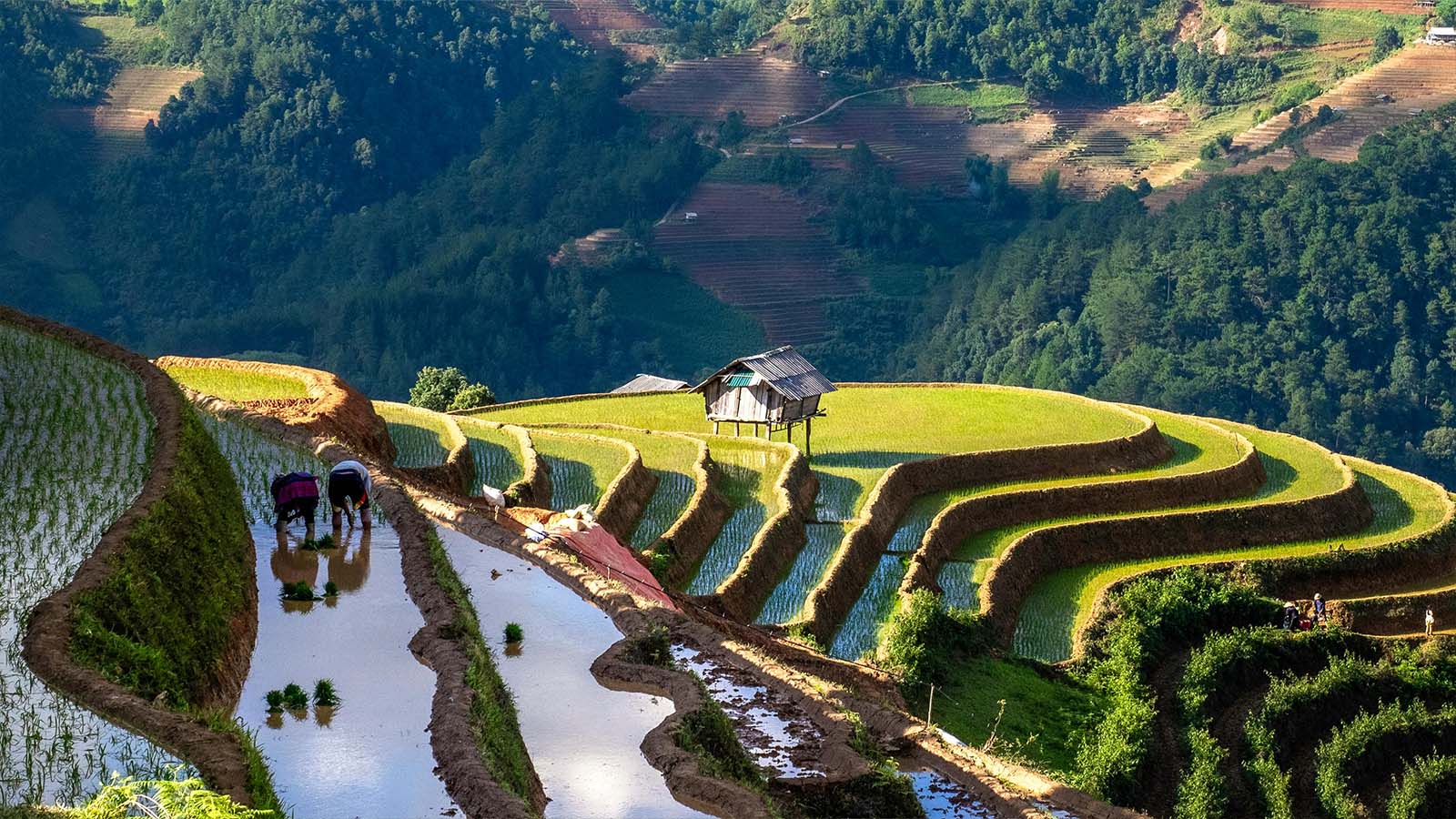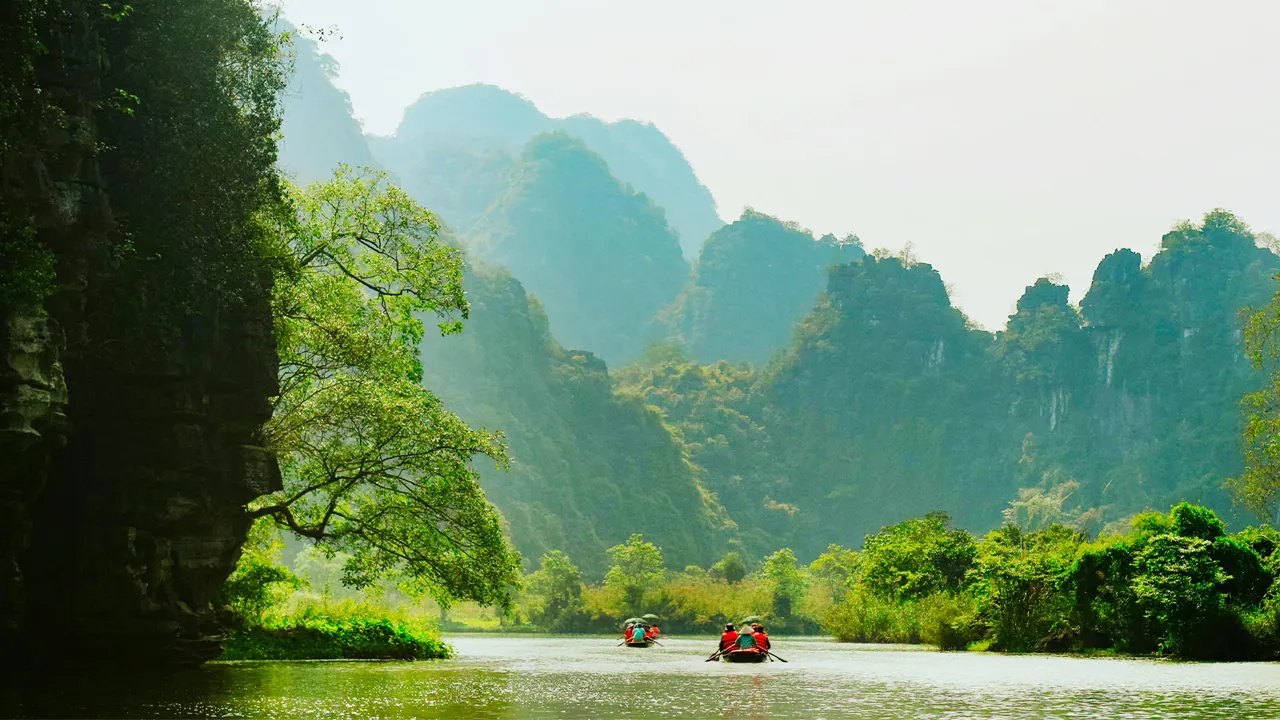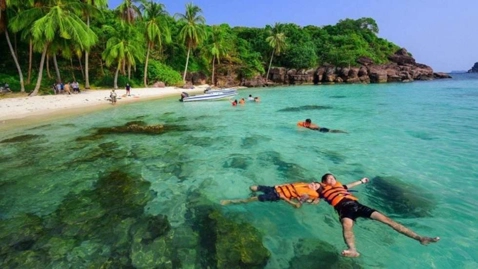What to Do in Vietnam for 5 Days 4 Nights?
Vietnam is a country full of history, culture, and stunning landscapes. From the capital city of Hanoi to the stunning waters of Halong Bay, the ancient charm of Hoi An, and the vibrant energy of Ho Chi Minh City, there is so much to explore.
But what if you only have a short time? What to do in Vietnam for 5 days and 4 nights? With careful planning, you can experience the country’s highlights without feeling rushed. In this article, we will guide you through an exciting 5-day itinerary, covering must-visit destinations, things to do, where to stay, and even what to eat.
Are 5 Days Enough in Vietnam?
Five days may not be enough to see everything, but it is still possible to experience some of Vietnam’s best attractions. If you plan well, you can visit both the north and central regions or focus on one region in depth.
Overview of the 5-Day Itinerary
Day 1: Hanoi
Day 2: Hanoi – Halong Bay – Hanoi – Hoi An
Day 3: Hoi An – Hue
Day 4: Hue – Saigon
Day 5: Saigon – My Tho – Saigon
A North-to-South itinerary is ideal if you’re a first-time visitor. You can start in Hanoi, cruise through the limestone karsts of Halong Bay, explore the charming town of Hoi An, and then head south to Ho Chi Minh City (Saigon). If you want to visit other countries after Vietnam, stopping in Ho Chi Minh City is ideal since it is well-connected to Cambodia, Thailand, and other Southeast Asian destinations.
What to Do in Vietnam for 5 Days And 4 Nights?
Day 1: Arrive in Hanoi + Half-Day City Tour
Your journey in Vietnam begins in Hanoi, the thousand-year-old capital and cultural heart of the country. After settling into your hotel, take a quick rest before heading out and starting to explore.
The Old Quarter: The Old Quarter is a great place to start. Walking around, you’ll see how each street specializes in something different—one sells traditional medicine, and another is packed with silver jewelry shops. The best way to experience it is to go slow, take in the sights, and maybe stop for an egg coffee to get you going. It’s a delicious drink with strong Vietnamese coffee at the bottom and a rich, creamy whipped egg foam on top!
Temple of Literature: Next, head to the Temple of Literature, Vietnam’s first university, built in 1070. The courtyards, stone steles, and ancient pavilions create a peaceful atmosphere that feels miles away from the busy streets outside. It closes at 5:30 PM, and the entrance fee is about 30,000 VND.
Hoan Kiem Lake: Before the day ends, visit Hoan Kiem Lake, the heart and center of Hanoi. This lake is surrounded by trees, benches, and locals enjoying a walk. Beside it is Ngoc Son Temple, which sits on a tiny island connected by a bright red bridge. It’s a small but interesting temple dedicated to a famous general and a giant turtle that helped him restore peace to the land. The tower in the middle of the lake is called the Turtle Tower, one of the most recognizable pieces of architecture that represents Hanoi. The entrance fee to Ngoc Son Temple is around 30,000 VND, and it’s open from 8 AM to 6 PM.
What to Eat on Your First Day
For dinner, it’s time to try Cha Ca La Vong, one of Hanoi’s most famous dishes. This dish features turmeric-marinated fish, usually snakehead or catfish, grilled and served sizzling in a pan with dill, green onions, and peanuts. You eat it with vermicelli noodles and a mix of fresh herbs, dipping everything in a tangy shrimp paste sauce. One of the best places to try it is Cha Ca La Vong, the original restaurant that has been serving this dish for over a century. Another great option is Cha Ca Thang Long, which offers a well-balanced and flavorful version that many locals prefer.
Where to Stay in Hanoi
As for where to stay, we recommend staying in the Old Quarter for convenience. If you want a comfortable boutique hotel, La Siesta Classic Ma May is a great option with elegant rooms and friendly service. For something more budget-friendly, Oriental Suites & Spa offers a central location and cozy rooms at a good price.
Day 2: Hanoi - Ha Long Bay Cruise - Hanoi - Hoi An
On the second day, you will leave Hanoi for one of Vietnam’s most famous natural wonders—Ha Long Bay. The drive takes around 2.5 hours.
Ha Long Bay: This UNESCO World Heritage Site is one of Vietnam’s most famous sites, with about 2000 limestone karsts rising from the sea. Spending the night on a cruise in Halong is the best way to explore the bay, but since we’re short on time, opt for a day cruise instead.
Most cruises follow a similar itinerary. You will board your boat, sailing past breathtaking rock formations with names like Fighting Roosters and Stone Dog. One of the highlights is Sung Sot Cave (Surprise Cave), one of the largest and most beautiful caves in the bay. Inside, you’ll find massive rock formations lit up with colorful lights, creating a magical atmosphere. You may also visit Ti Top Island, where you can climb to the top for a panoramic view or take a swim on the sandy beach. Lunch is served on board, featuring fresh seafood, stir-fried vegetables, and traditional Vietnamese dishes.
By mid-afternoon, the cruise returns to the harbor, and you will take a transfer back to Hanoi and leave for the charming Hoi An.
Hoi An: By mid-afternoon, the cruise returns to the harbor, and you will take a transfer back to Hanoi. From here, you will catch a domestic flight to Da Nang, which takes about 1.5 hours. This is the fastest and most convenient way to reach Hoi An. Upon arrival at Da Nang International Airport, a 45-minute drive will bring you to Hoi An, where you can settle into your accommodation.
What to Eat in Hoi An
After a long day of travel, you should try one of the town’s iconic dishes. A great choice for dinner is Cao Lau, a specialty that you can only find in Hoi An. This dish features chewy noodles, savory slices of pork, fresh greens, and crispy rice crackers, all soaked in a rich, aromatic broth. Thanh Cao Lau is one of the best places to enjoy this dish.
If you’re in the mood for something lighter, White Rose Dumplings (Banh Bao Banh Vac) are another must-try. These delicate, translucent dumplings are filled with shrimp or pork and topped with crispy fried shallots. You can find them at White Rose Restaurant, one of the best places in town that makes them.
Where to Stay in Hoi An
Choosing accommodation in the Ancient Town or along An Bang Beach is ideal. If you prefer a boutique hotel with historical charm, Little Riverside Hoi An is a great option. For a peaceful beachfront stay, Aira Boutique Hoi An offers a relaxing escape.
Day 3: Hoi An Ancient Town – Hue
On the third day, you will start your morning by exploring Hoi An Ancient Town.
This charming riverside town is known for its yellow-walled shop houses, lantern-lit streets, and well-preserved heritage buildings. Walking through the old town, you can visit the Japanese Covered Bridge, an iconic symbol of Hoi An, and Tan Ky Old House, which showcases the blend of Japanese, Chinese, and Vietnamese influences. Don’t miss Phuc Kien Assembly Hall, an ornate Chinese temple dedicated to the sea goddess Thien Hau. For lunch, try other Hoi An specialties, such as Chicken Rice, or Madam Khanh’s Banh Mi.
Hue: In the afternoon, you will take a three-hour drive to Hue, Vietnam’s former imperial capital. The journey along Hai Van Pass is one of the most scenic routes in the country, offering spectacular coastal views. Upon arrival, you will take a boat ride on the Perfume River, which flows through the heart of Hue. This peaceful cruise allows you to admire riverside temples and pagodas, including the famous Thien Mu Pagoda, an elegant seven-story structure overlooking the water.
What to Eat in Hue
Before ending the day, you will visit Dong Ba Market, Hue’s largest and most vibrant market. It is a great place to experience the local food culture, with stalls selling everything from fresh seafood to regional specialties. We recommend trying cơm hến, a specialty of Hue made with baby clams, rice, and fresh herbs.
Where to Stay in Hue
You stay the night in Hue, and for a comfortable experience, we recommend Pilgrimage Village Boutique Resort & Spa, which offers a peaceful retreat surrounded by gardens. If you prefer something closer to the city center, Saigon Morin Hotel is a historic hotel with a great location near the Perfume River.
Day 4: Hue – Saigon – City Tour
Your morning in Hue starts with a visit to the Imperial City, a massive complex of palaces, temples, and gates that once served as the seat of the Nguyen Dynasty. Built in the early 19th century, the Imperial City is surrounded by high walls and a moat, creating a fortress-like atmosphere. Walking through the Ngo Mon Gate, you enter the heart of the citadel, where you’ll find Thai Hoa Palace, the grand hall where emperors held ceremonies. Another highlight is the Forbidden Purple City, which was once reserved for the royal family but is now in ruins due to war damage.
Before leaving Hue, enjoy a bowl of bun bo Hue, a spicy beef noodle soup that locals love. A great place to try it is Quan Cam, which serves an authentic version of this flavorful dish.
After lunch, take a short flight to Saigon (Ho Chi Minh City). The journey takes about 1.5 hours, and upon arrival, you check into your hotel before heading out for an afternoon city tour.
Saigon: Start at Notre Dame Cathedral, a beautiful French colonial church in the heart of the city. Next to it is the Central Post Office, featuring elegant architecture and vintage charm. From here, visit the Reunification Palace, once the residence of South Vietnam’s president and now a museum. If you’re interested in history, stop by the War Remnants Museum, where exhibits showcase the impact of the Vietnam War.
What to Eat in Saigon
For dinner, try banh xeo, a crispy Vietnamese pancake filled with shrimp, pork, and bean sprouts. For something heartier, go for a plate of Com Tam (broken rice) with grilled pork, egg meatloaf, shredded pork, and pickled vegetables.
Where to Stay in Saigon
For your stay in Saigon, we recommend Hotel des Arts Saigon MGallery, a stylish boutique hotel with a rooftop pool and excellent location. If you prefer something more budget-friendly, Silverland Yen Hotel offers great comfort in the city center.
Day 5: Saigon - My Tho - Saigon - Departure
On your last day, take a trip to My Tho, a gateway to the Mekong Delta, known for its network of rivers, fruit orchards, and floating markets. The drive takes about 1.5 hours from Saigon. Upon arrival, board a wooden boat and cruise along the Tien River, passing by Dragon, Unicorn, Phoenix, and Tortoise Islands.
One of the highlights is visiting Ben Tre, where you can take a smaller rowboat through narrow canals lined with water coconut trees. You’ll also visit a local village to see how coconut candy is made and taste tropical fruits like mangosteen, dragon fruit, and rambutan.
What to Eat in My Tho
Lunch is a Mekong Delta specialty: elephant ear fish, a crispy fish often served with rice paper, fresh herbs, and sweet-sour dipping sauce. You can try this at Mekong Rest Stop Restaurant, a popular stop for travelers.
Departure
In the afternoon, return to Ho Chi Minh City for your flight home. If you have extra time before departure, visit Ben Thanh Market for some last-minute shopping. You’ll find everything from handmade crafts to local coffee and spices, making it the perfect place for souvenirs.
This concludes your 5-day, 4-night journey through Vietnam, covering the highlights of the north, center, and south in a short but unforgettable trip.
Which Month is The Best to Visit Vietnam?
Vietnam has three distinct regions—North, Central, and South—each with its own climate. The best time to visit depends on where you plan to go.
Spring (March to April) and Autumn (September to November) are ideal months because the weather is pleasant across the country. In the north, you’ll find mild temperatures and clear skies, perfect for exploring Hanoi and Halong Bay. Central Vietnam, including Hoi An and Hue, sees dry and comfortable weather. In the south, Ho Chi Minh City and the Mekong Delta are warm but not too humid.
December to February is great if you love cooler weather, especially in the north. The south remains warm and dry, making it a great time for beach destinations like Phu Quoc.
May to August is the summer season, bringing high temperatures and increased rainfall. This is not the best time for Central Vietnam, as it can experience storms, especially in July and August, which are the rainiest months.
If you want the best overall experience, March to April and September to November are the safest choices.
What is The Best Way to Travel in Vietnam?
For long distances between cities, you have three main options:
- Flights are the fastest way to travel, especially for long journeys like Hanoi to Ho Chi Minh City. Domestic airlines such as Vietnam Airlines, VietJet Air, and Bamboo Airways offer frequent flights.
- Trains are a scenic but slower option. The Reunification Express connects Hanoi and Ho Chi Minh City, stopping at cities like Hue, Da Nang, and Nha Trang.
- Buses are a budget-friendly choice, but they take longer and are less comfortable than trains or flights.
How Do You Travel Within Cities in Vietnam?
- Taxis and Ride-hailing Apps – Grab is the most popular app, offering motorbike and car rides. Traditional taxis like Mai Linh are also reliable.
- Motorbike Rentals—If you’re comfortable riding, renting a motorbike gives you the most freedom. However, traffic can be chaotic, especially in big cities like Hanoi and Ho Chi Minh City.
- Bicycles—In smaller towns like Hoi An, cycling is a great way to explore. Many hotels offer free bike rentals.
- Walking—Old quarters like those in Hanoi and Hoi An are best explored on foot. Just be careful when crossing the streets, as traffic can be unpredictable.
For the most convenience, flights between major cities and trains or private cars for shorter distances are the best choices.
How Much Money Should I Take to Vietnam for 5 Days?
How much you spend depends on your travel style.
Budget travelers: $25–$40 per day ($125–$200 total)
- Stay in hostels or budget hotels ($8–$15 per night)
- Eat at street food stalls ($2–$5 per meal)
- Travel by local buses, motorbike rentals, or Grab
- Visit free or low-cost attractions
Mid-range travelers: $50–$100 per day ($250–$500 total)
- Stay in boutique hotels or homestays ($30–$60 per night)
- Dine at local restaurants ($5–$15 per meal)
- Use domestic flights, taxis, or trains
- Join tours for major attractions like Halong Bay or the Mekong Delta
Luxury travelers: $150+ per day ($750+ total)
- Stay in 5-star hotels or resorts ($100+ per night)
- Enjoy fine dining and private transport
- Book luxury cruises, spa treatments, and private tours
For a comfortable trip, $300–$500 for 5 days should be enough for most travelers, covering accommodation, food, transport, and activities. Bring some extra cash for shopping and souvenirs. Note that these are reference prices; costs can vary based on the period you visit and the services you book.
Final Words
Planning a short trip to Vietnam may seem challenging, but with a well-structured itinerary, you can experience its culture, nature, and cuisine in just a few days. Now that you know what to do in Vietnam for 5 days and 4 nights, it’s time to make it happen!
If you want a stress-free journey, book a guided tour with us! We ensure smooth transportation, expert guides, and well-planned activities, allowing you to fully enjoy your trip without worrying about logistics. Contact us today and start exploring Vietnam!
Send us your comments about : What to Do in Vietnam for 5 Days 4 Nights?
Required fields *
You might also be interested
Our clients’ favorite journeys to customize
Looking for inspiration? Discover some of our most popular tours in Vietnam, highly appreciated by our travelers. They are a great starting point to help you choose the perfect journey through Vietnam, Laos, Cambodia, Myanmar, or Thailand—whether you’re traveling solo, as a couple, with family, or with friends.
And since this is your trip, feel free to customize it just the way you like!
Vietnam Cambodia Itinerary 14 Days
Hanoi – Hoa Binh – Mai Chau – Ninh Binh – Halong bay – Hue - Danang – Hoian – Saigon – Ben Tre - Can Tho – Saigon - Siem Reap Angkor - Tonlé Sap - Siem Reap – Ta Prohm - Departure
Vietnam 14 Day Itinerary
Vietnam 14-day itinerary covers the country’s top highlights and quintessential experiences for an unforgettable journey.
Honeymoon Tour Pakcages In Vietnam 12 Days
Saigon Arrival - City Tour – Mekong Delta – Danang – Hoian - by flight - Da Nang – Hanoi - by flight – Halong - overnight on junk – Departure
Authentic Hoang Su Phi Trekking Tours
Hoang Su Phi trekking tours take you to stunning terraces, meet few tourists, connect with locals and enjoy authentic culture.
Best Nha Trang Beach Tour 4 Days
Saigon/Hanoi – Nha Trang relaxation – Saigon/Hanoi – Departure
Mekong Delta Bike Tour Itinerary 7 Days
Cycle through the Mekong Delta in 7 days, discovering floating markets, orchards, craft villages, and tranquil green islands.
Are you interested in this tour?


































Comment